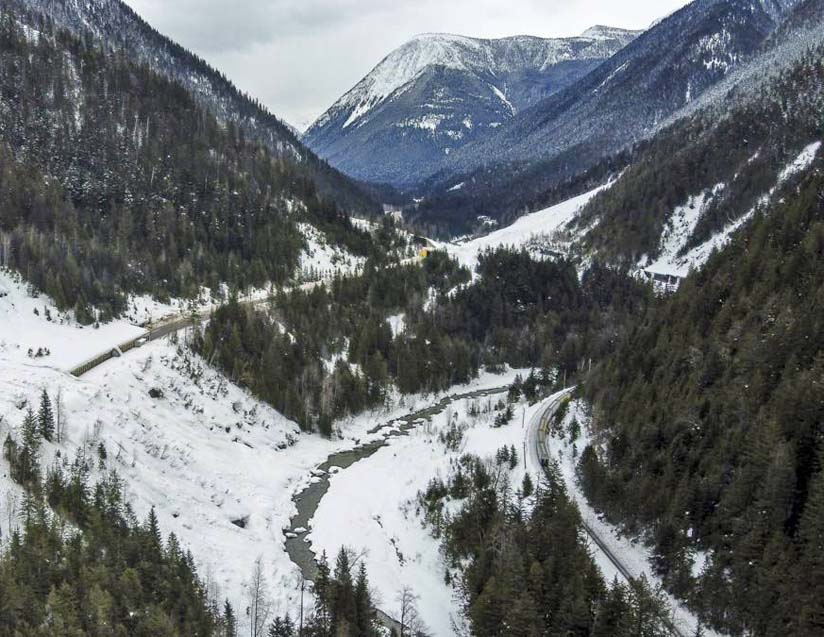
Rogers Pass British Columbia - The afternoon of 4 Mar 1910 was warm, by winter-in-Canada standards.
Following a nine-day storm cycle, more than six feet of snow had fallen in the Selkirk Mountains, through which the Canadian Pacific Railway (CP) had recently
been completed.
As the route summited Rogers Pass, crude snowsheds protected the most exposed areas.
Rising temperatures caused a series of avalanches to bury the track next to the snowsheds, marooning a passenger train traveling eastward from
Vancouver.
That afternoon, while the train waited near Revelstoke, at the western terminus of the pass, a crew of railroad workers used a rotary plow and hand tools to
clear the slide.
Near midnight, they had just finished punching the hole through when a slope across the narrow canyon on Mount Cheops released.
The avalanche threw their 90 ton plow off the tracks and enveloped the men, killing 62 of them, including 32 Japanese immigrant workers.
"It's still one of worst avalanche disasters in Canada's history," said Shelley Bird in early March, standing next to a model of the event in the
Rogers Pass Discovery Centre.
Bird is the public information officer for Canada's Glacier National Park, which includes Rogers Pass.
To avoid the pass, the railroad churned a five-mile tunnel through the Canadian Rockies.
For decades the area sat devoid of industry, quiet as it had been for the uncountable preceding millenia.
Tom Hallberg.
 Article abridged - the remainder of this article has been removed as it deals with highway avalanche protection.
Article abridged - the remainder of this article has been removed as it deals with highway avalanche protection.
(because there was no image with original article)
(usually because it's been seen before)
provisions in Section 29 of the Canadian
Copyright Modernization Act.
